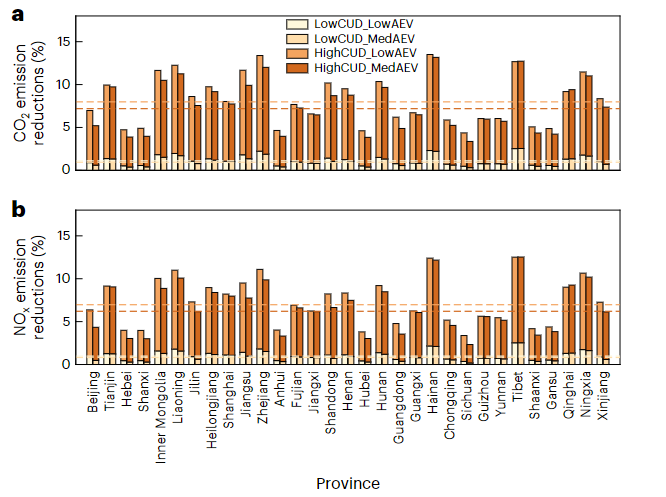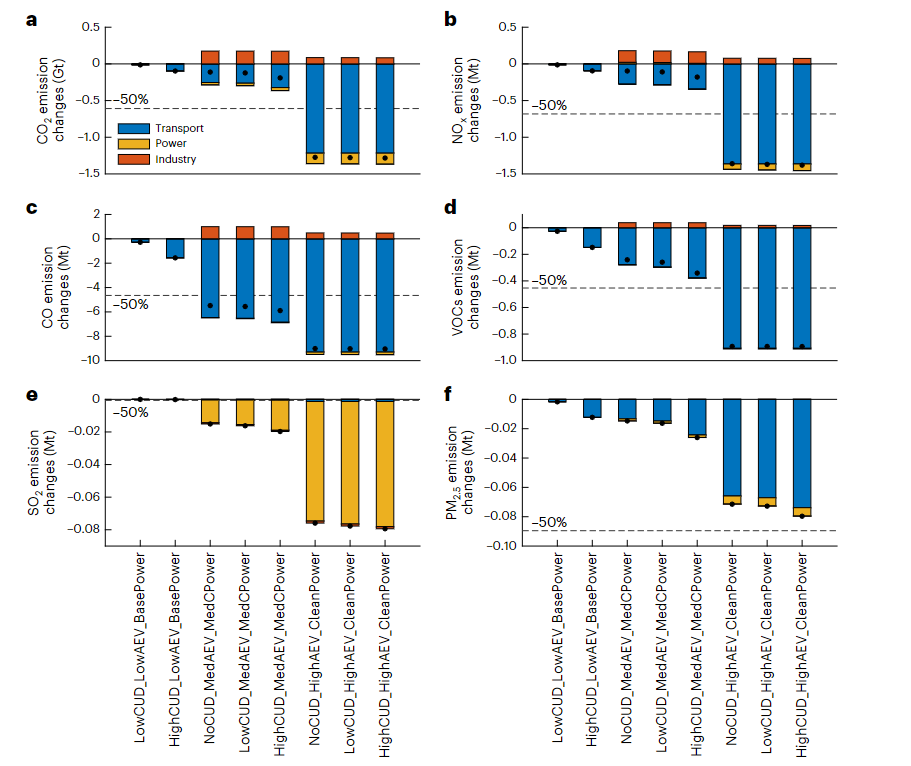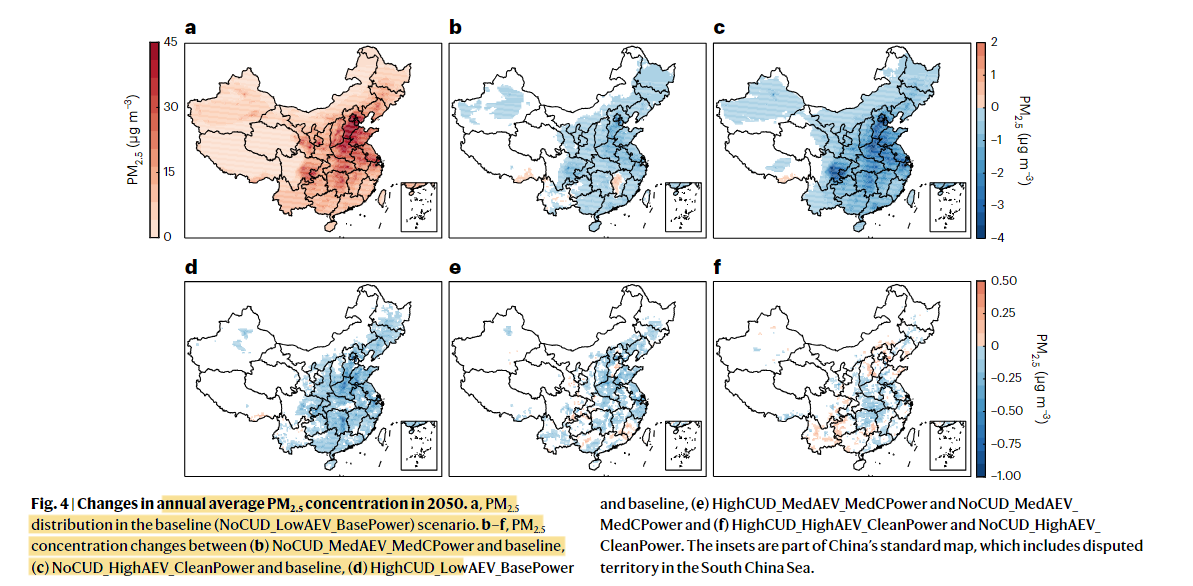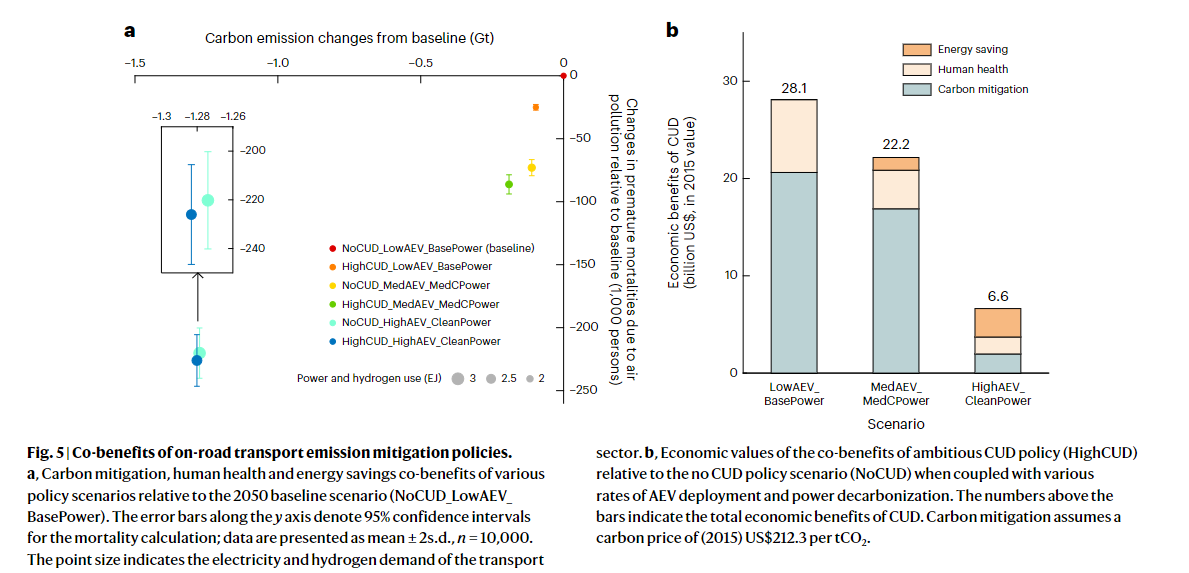Objective:
- An integrated approach and provide presumably the first attempt to investigate the implications of CUD for carbon emissions, energy use, air quality, and human health
Case:
Methodology:
- Regression
- Dynamic projection model for emissions in China
- GCAM-China: energy
- MEIC: emissions
- Avoided premature mortality:
- $Mort_{i,j,k} = Pop_{j,k} \cdot Base_j \cdot (\frac{1}{RR_j(C_{i,k})}-\frac{1}{RR_j(C_{Base,k})})$
- Where j is age group, k is grid box, RR is the relative risk of air-pollution-induced premature death, with air pollutant concentrations C, i is the policy scenario
- GEMM:
- $RR(c)= e^{\frac{\theta+log(c/a+1)}{1+e^{-(c-\mu)/v}}}$
- Where c is annual average ambient PM2.5 concentration; e is Euler’s number; other coefficients are parameters of the shape of RR curves
- Social cost carbon:
- Value of statistical life:
- Energy saving

Data Source: Open
Findings:
- In the baseline scenario, transport remains a major emission source and contributes 13%, 25% and 15% of total CO2, NOx and CO in 2050 (38% higher than 2017)
- CUD policy provides co-benefits for climate, energy, air quality and health

- Through reviewing the 5D’s framework, negative impacts on private passenger vehicle use can be observed
- Transport emission reductions mainly occur in eastern urban areas.
- CUD policy leads to emission decreases concentrated in cities of all provinces

- CUD delivers health co-benefits and avoids 5.8 thousand premature deaths via reductions in non-exhaust vehicle emissions and upstream emissions of air pollutants


Coding Reference:





